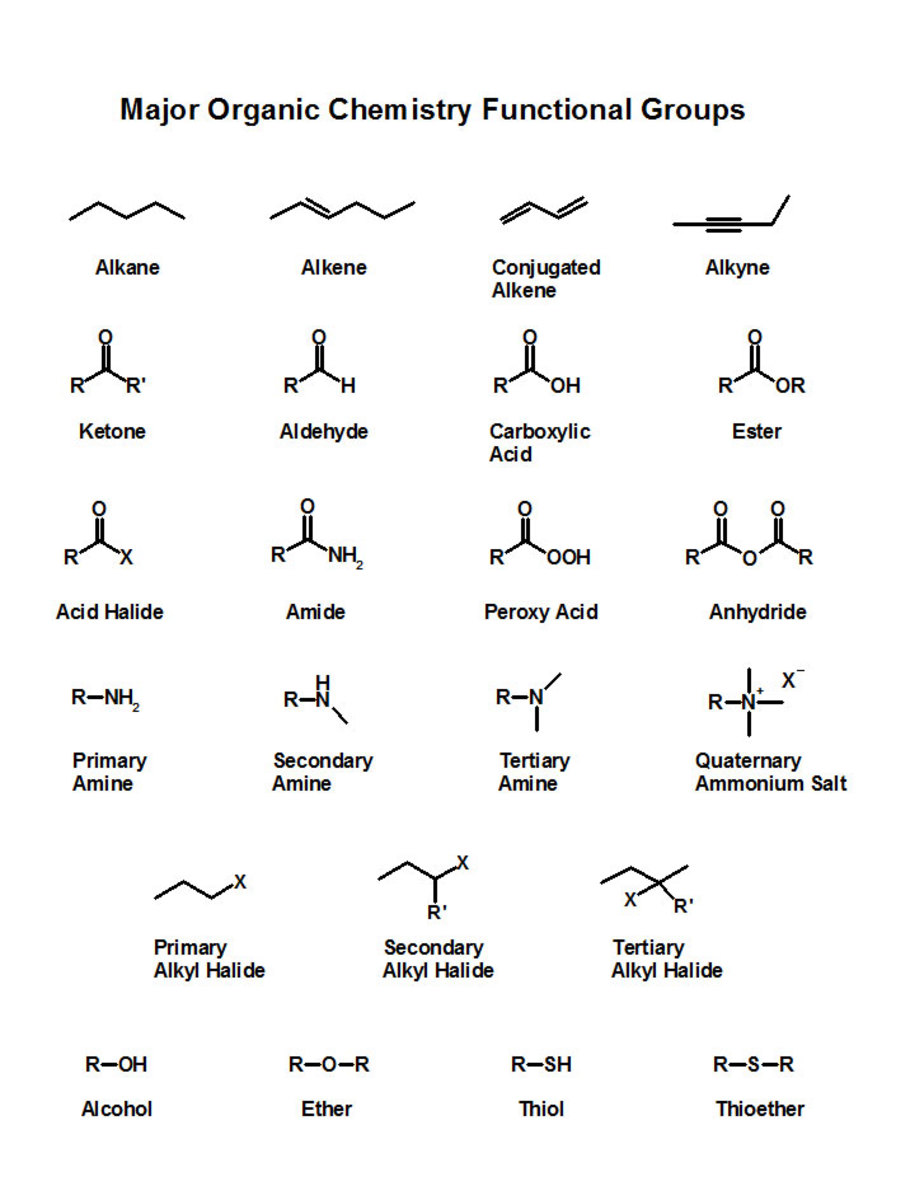Imagine Printing Your Own Drugs From Home!? - 3D Printing
The Drug Printing Revolution
3D Printer in every home!
Imagine if you could print a drug from the comfort of your own home. The idea of drugs being printed at home being researched at the University of Glasglow, with the new 3D printers. It is possible to print pretty much everything now with the development of 3D printers.
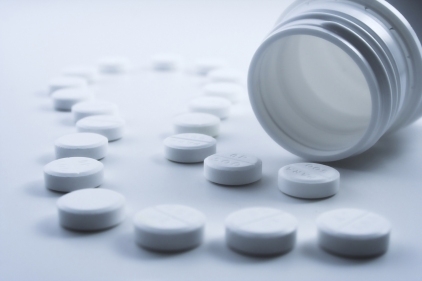

Almost everyone has a computer now with internet making software easily obtainable. An idea put forward by a research team at the University of Glasglow proposed that one day drugs and chemicals could be accessed on cards bought from the internet.
Lee Cronin and his researchers created a selection of chemicals using a digital blueprint and a 3D printer costing $2000, used in the Fab@Home project.
The printer has been designed to print the lab equipment (flasks and connecting tubes) in precise dimensions and then squirt the ingredients into the right places to make the desired compound. This technology is now being used by existing chemists as a way of discovering new drugs.
Technology like this would bring chemistry to the masses by allowing anyone with a 3D printer and internet to become a chemist.
People in regions where a local chemist is too far away or the elderly may struggle to get to could just make their own headache pills or detergents. This is a suggestion that has been proposed by “Lee Cronin” from the University of Glasglow.
This may also allow people to print and share recipes for niche substances that chemical and pharmaceutical companies do not make, either because their aren’t enough customers or haven’t created them yet.
Challenges!
The major issue with the 3D printing of drugs is trying to make it safe, to stop black markets that may offer illegal drugs. This idea could be used in the wrong hands and may allow anyone to download illegal software and print illegal drugs.
3D printing has the potential to allow anyone to build anything! This concept has had a lot of controversy because you could literally print anything, as long as you had the correct materials and the software needed. The major question that has been asked is how do you make chemistry printable?
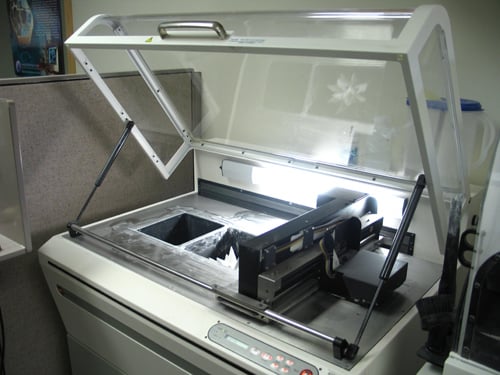
Proposed procedure
A 3D printer can print anything you program it to, therefore in order to begin the drug making process a set of chambers must first be printed. These chambers are printed with precise geometry and are used to mix the required chemicals needed to create the desired drug. The precision of 3D printing allows the control in each stage of the reaction which is crucial to the making of a drug.
Cronin and his colleagues discovered that they could use a common bathroom sealant as the primary material for printing reaction chambers of all shapes and sizes, as well as connection tubes of varying lengths. As this is just experimental at the moment it was possible to use common bathroom sealant although a better material such as Teflon may be used in the future. Once the kit has set hard the printers nozzles squirted in the reactants or “chemical inks”.
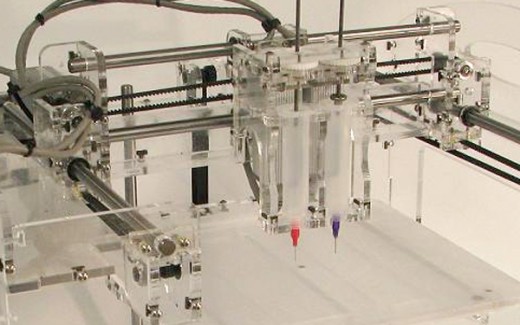
Theory
In theory, the dimensions of the equipment and chemical ingredients required to produce a particular product can all be pre-designed and embedded in the same software blue-print – all the user would need to do is download the blueprint and feed it to the printer.
The researcher’s vision is to have an online store where you can download an app for a particular drug to your 3D printer and order a standard set of chemical inks, similar to the common printer available now.
Potential health dangers have been raised because allowing people to print their own legal/illegal drugs may become a problem. The researchers came up with an idea that will minimise these dangers. When creating the blueprint the software would be written to create a specific end product that would be difficult to modify into making other reactions. In the creation of the blueprint the reactions would be pre-evaluated in the lab to try and stop anyone from hacking it.
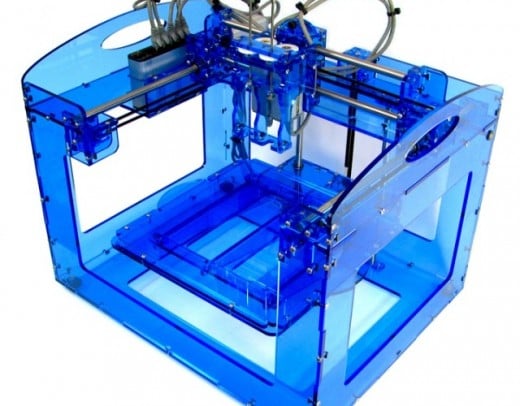
This is just a theory at the moment although experiments and research may slowly make this a reality. Cronin has printed a simple block containing two chambers connected to a central mixing compartment. This was enough to carry out simple inorganic and organic reactions, and produce totally new compounds. This was done as proof of principle- the resulting compounds don’t have specific applications.
The researchers carried out a well-known reaction requiring a catalyst. They printed the catalyst into one of the chamber walls and produced the expected product, showing that this method works (Nature Chemistry, DOI:10.1038/nchem.1313).
The research emphasises that the team’s method fundamentally changes the way chemistry is done. No longer are test tubes, flasks and beakers just used to hold the reactants they have become active agents in the chemical process. This is because a chemical reaction depends not just on the starting ingredients, but also the ratios and the speed at which they are mixed. This can be altered by changing the size of the reaction chambers and the distances the inks have to travel to reach them.
“If a reaction doesn’t work, rather than just changing the reagents you change the shape of the reactor”
This geometric control allows the intricate details of a reaction to be varied systematically in new ways which might result in totally new compounds.
- Make Anything | Fab@Home
Fab@Home will change the way we live. It is a platform of printers and programs which can produce functional 3D objects. It is designed to fit on your desktop and within your budget. Fab@Home is supported by a global, open-source community of profess
Cronin showed that this was possible by repeating one of the reactions. He used the same amounts of starting materials, but programmed the printer to reduce the size of the central mixing compartment. Only the reactants that trickled in before that compartment filled up got to take part in the reaction. This was enough to change the products of the reaction!
Chemists have been doing the same procedures for many years and things have pretty much stayed unchanged. Printed labware may vastly change the way new compounds are discovered and completely change the way chemists look at things.
Some problems have occurred where a few fires have ignited trying to print reactions that can be explosive in the presence of oxygen.

At the moment the process is experimental and the researchers are hoping to change the flask material from bathroom sealant to something like Teflon, which will allow air-sensitive reactions to become easier.
The team are currently working on a kit to print ibuprofen. In countries where there is little access to the most basic drugs and cleaning products, but people still have access to high end mobile phones. It is not clear how people will get a 3D printer and the chemical ingredients. However 3D printers could be distributed to the developing world. Most drugs and detergents are made of carbon, hydrogen and oxygen which are readily available substances such as corn syrup, glycerol and paraffin.
It can be imagined that in the future people will be able to make drugs from 3D printing at the comfort of their own home.
Please post any comments if you like the Hub I would very much appreciate it and I would be amazingly happy if you decide to follow me!
Post your opinions! - 3D Printing
Thanks
Michael Domingos






